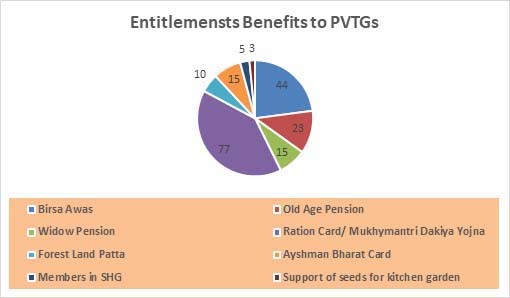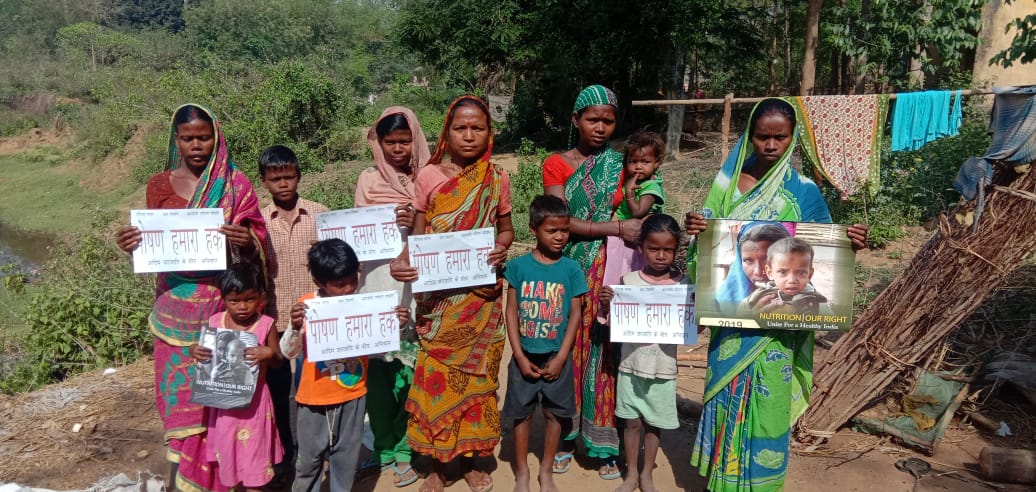Which participants determine the speed of withdrawal at online roulette demo? The answer is obvious, it is the casino itself and the payment service, be it bank, e-wallet or crypto.
Caritas India Nutrition Campaign gains new momentum among the SABAR PVTGs of Dumaria in Jharkhand
Caritas India’s Campaign against Malnutrition – “Poshan Hammara Haq” is catching momentum gradually with our partners and the village communities. Five Particularly Vulnerable Tribal Groups (PVTGs) villages Forest Block, Madotoliya, Bankishole, Dumuria and Rangamatiya in Dumaria Block in Jharkhand is home to the SABAR PVTG groups. Sharamjivi Mahila Samiti, one of Civil Society Organisation in Gram Nirman has taken up “Nutrition our right” message to the community. Gram Nirman is indeed a multi-dimension intervention programme supported through the Caritas Australia and facilitated by local NGOs in partnership with Caritas India in the state of Jharkhand and Chhattisgarh.
Located around 60 km from the busy Industrial city of Jamshedpur, Dumaria is relatively a sparsely populated town of sabar PVTGs villages within the radius of approximately 25 km. The Shramjivi Mahila Samity is working in Dumuria block since two decades on different issues like Health, Education, Sanitation, Women Empowerment, Livelihood, Migration Trafficking, Strengthening of Gram Sabha etc. The Gram Nirman Programme covers 3199 households with 13110 population. The total PVTGs households covered are 77 population is mere 294, where male account for 157 and the female 137.
The sabar were once a nomadic people some 3 decades ago. They have settled and mostly depend of the minor forest process for the sustenance. The Landholding is negligible, and agriculture is meagre with no sustainable income. They collect honey, wild fruits and minor forest produces to make a living.
Through the Gram Nirman programme support, 192 Government entitlements were ensured to the communities.
Nutrition Campaign was launched in the five villages to create awareness on nutritional aspects, awareness about colostrum feeding, nutritional care required for women and adolescent girls, exclusive mothers’ milk for 6 months. The unhealthy and risky practices of feeding the new born child has been prevalent among the PVTGs such as honey, goat milk, and sugar water, and stale rice water etc. Such practices put the newborn and young children to risks. The Nutrition campaign attracted 130 participants who were happy to be part of such programme and they realized wrong practices in the communities and vowed to create more awareness among the fellow women to avoid any health risks to the children and identify cases of extreme mal-nutritional deficiency signs of SAM, MAM and report them on timely basis to the NGO and AWC.
India as a nation produces sufficient food to feed its population, it is unable to provide access to food to a large number of people, especially the marginalized section of the society. Unfortunately, India largest undernourished and hungry population in the world.
194.6 million people go hungry every day and about 15.2% of the total population is undernourished. The Global Hunger Index 2016 ranks India at 97 out of 118 countries.
Food Corporation of India (FCI) stand at an all-time high for last many years. Despite this, over 300 million people go without two square meals a day. With over 230 million people not sure about accessing their daily bread, 50% of children undernourished and stunted, and about 68 out of 1000 dying before the age of one year, food security is undoubtedly a major concern and top priority for the Indian government today. the
In 1993, the poorest of the poor amongst the STs were identified as Primitive Tribal Group and criteria set for identification of such PTGs were (a) Primitive Agricultural level of technology (b) very low level of literacy and nearly stagnant or diminishing population. Till today 75 tribal communities have been identified as PTG spread over 14 states and one union territory. In 2006 the government of India proposed to rename “Primitive Tribal Group” as “Particularly Vulnerable Tribal Group”. PTG has since been renamed Particularly Vulnerable Tribal Group by the Government of India
PVTGs Tribes in Jharkhand are among the most vulnerable to Hunger and starvation. The tribes are Asur, Pahariya, Sabar, Birhor, Birjia, Korwa, Mal Pahariya, Parhaiyas and Sauriya Pahariya have been under special scrutiny on account of their primitiveness, backwardness and declining population. These nine tribal communities are among the thirty-two communities which come under Particularly Vulnerable Tribal Groups (PVTGs). PVTGs account for 2.33 lakhs (Census 20011) which is very nominal part of the total tribal population.
Though the Infant Mortality Rate has decreased from 54 (NFHS III, 2005-06) to 46 (NFHS IV, 2015-16) in rural tribal areas but it’s a poor status among the PVTGs residing in Jharkhand – high infant mortality rate, less life expectancy, high prevalence of anemia among the PVTGs. According to the report of NFHS IV, 88% of children belonged to PVTGs community are underweight in the state. 71.5 % children 6-59 months, 63.7% pregnant women, 67.5% all women of age 15-49 years are anemic (NFHS IV). The full antenatal care is only of 5.5% among PVTGs.
A lot more is needed to be done for the PVTGs in the state and through CSO efforts some of the vulnerable communities like the sabar have some hope for the future of the children who otherwise will continue to decline in numbers due to maternal and child death related to malnutrition.
Copyright Caritas India 2013 ! Developed by Neural Info Solutions Pvt. Ltd.


















































